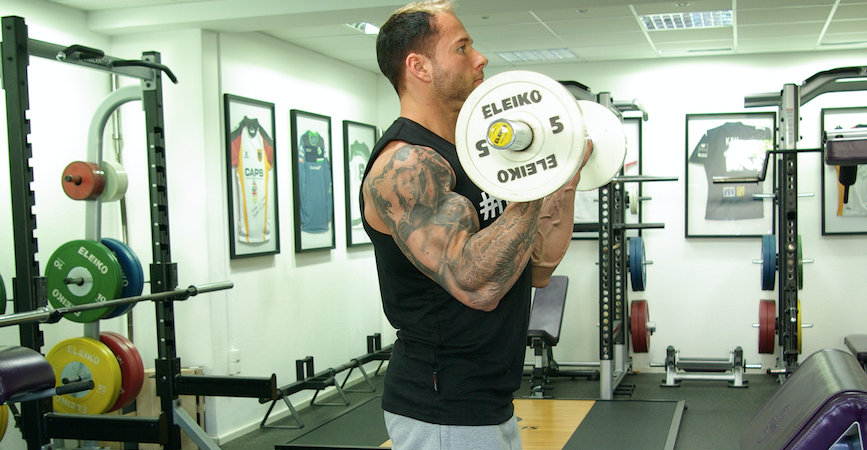"Ask the Coach" is the column in which Wolfgang Unsöld answers your questions. The book of the same name was published by Riva Verlag and is available directly here on Amazon.
Question: You recommend most trainees to carry out a deload in the form of reducing the sets by half every third training session. However, if there are occasional workouts where I do a deload, I should generally have less drive to do the same program. Can I simply do another training program as a deload? Alexander S
WU: That's a good question, and there are multiple options for answering it. Basically, the aim of the deload is to give the body a little more time to regenerate by reducing the given load in the amount of the volume of a training session. However, since I still want to expose the body to the specific stimulus of the exercise of the current training program, I recommend training the given program with its exercises. Another option for a bit more variation for trainees who train at least 4 times a week is to simply reduce the training frequency during deload by inserting another workout that puts less strain on the system overall, such as a unit arm, forearm or calf training. And so reduce the total volume per week to optimize my recovery and avoid a plateau. One method I like to recommend for these "filler workouts" is the 100-rep arm method. A total of four exercises are chosen, two for the elbow flexors and two for the elbow extensors, and each exercise is performed for 100 repetitions.
The 100 reps primarily train a muscle's working capacity, improve capillarization, and increase glycogen resynthesis. I like to use the 100 repetitions method for individual workouts because the short-term effect is very high. I don't use the 100 rep method for an entire phase, however, because the potential for increasing six workouts in a row with this method is very low. I've also used the method at some of the YPSI One Day Arm Cure events as a final workout to use up the last bit of unused glycogen and expose the muscle to another important hypertrophy stimulus.
The 100 reps method looks like this:
– Choose a weight for a given exercise that you can do 15-20 reps with.
- Perform a set to failure with that weight.
– Drop the weight for a rest of your choice up to 60s. The shorter the break the better.
– Perform the next set to failure with the same weight.
– Drop the weight for a rest of your choice up to 60s. The shorter the break the better.
– And with the identical weight, perform the next set to failure.
- Repeat this until you have completed a total of 100 repetitions for this exercise.
The goal is to complete those 100 reps per exercise with a minimal number of sets and rest.
An example program - 100 repetitions method
A Standing EZ Dumbbell Curls, Pronated, Shoulder Width - Min sets a Max reps, 3010 tempo, min rest
B Overhead tricep extensions on lower cable with rope, neutral grip – min sets a max reps, 2110 tempo, min rest
C 65° KH incline curls, supinert – min sets a max reps, 3010 tempo, min rest
D Upper cable tricep extensions with a straight stance, pronated tight grip - min sets a max reps, 2011 tempo, min rest
Due to the use of isolation exercise for the elbow extensors and flexors, the overall fatigue of this method is very low despite the high total rep count.
This arm training with the 100 repetitions method is suitable as a workout to reduce the training frequency as a means of "deloading" or as an extra workout at the weekend.
Good luck with the 100 reps method!
If you have a question for the Ask the Coach column, post it in the comments below and with a little luck your question will be selected for an upcoming post or the next Ask the Coach book.
Image: WBFF Pro Daniel Harder at the YPSI during the photo shoot for the upcoming Improve Your Arms ebook.

